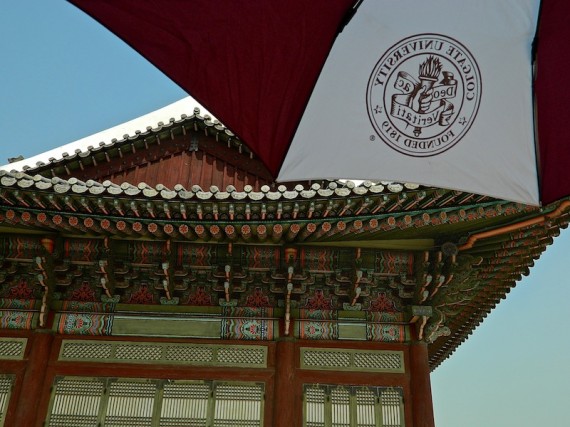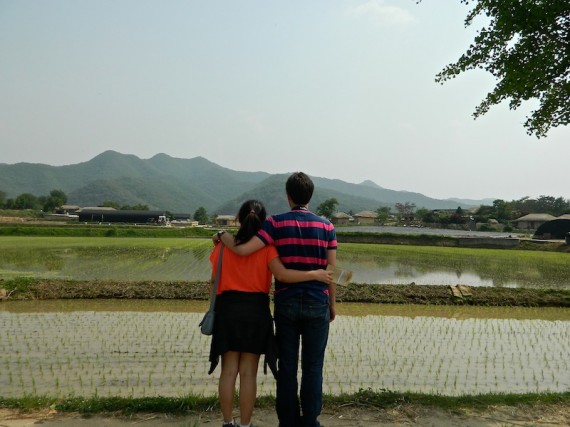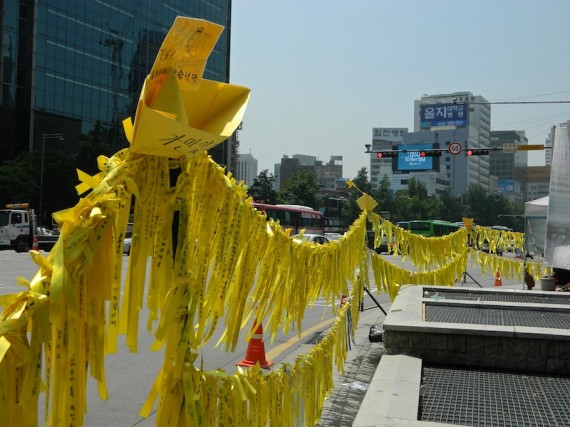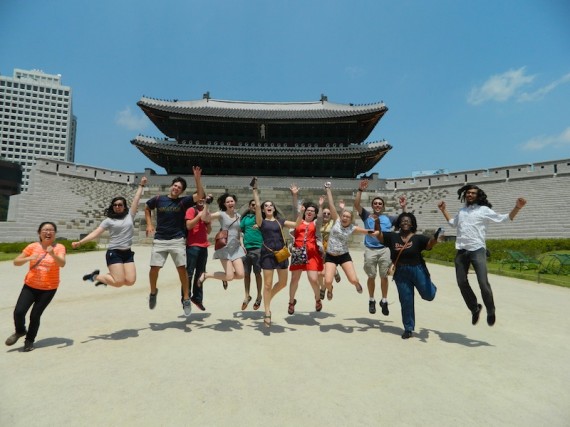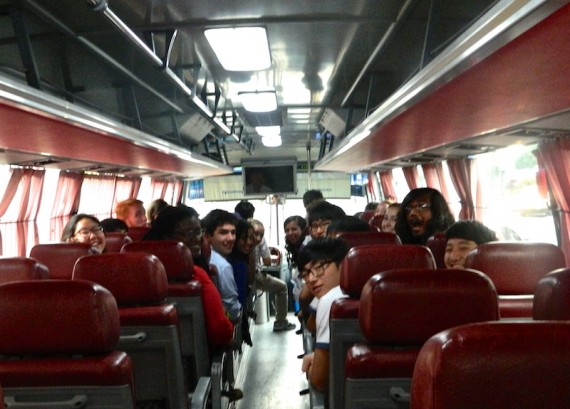The following pictures and text were provided by Erin Huiting ’17, who returned from the Benton Scholars’ trip to Korea in June, 2014.
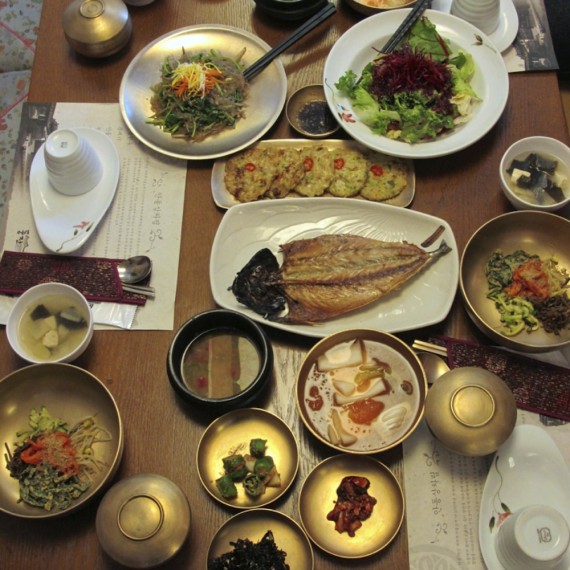
At the table in Korea.
Food is such an integral part of the Korean culture. When we first entered a restaurant we would be led graciously to our table, and then we would remove our shoes and sit down. Slowly, but surely, our servers would begin to present us food. We would be given bowels of vegetables, rice, noodles, fish, meats, soups… the food was never-ending, but that kept the conversations and laughter never-ending. By the end of our meal, we would have an array of dishes spread across the table – we could mix and match the different flavors and try so many new foods. Every meal brought something new.
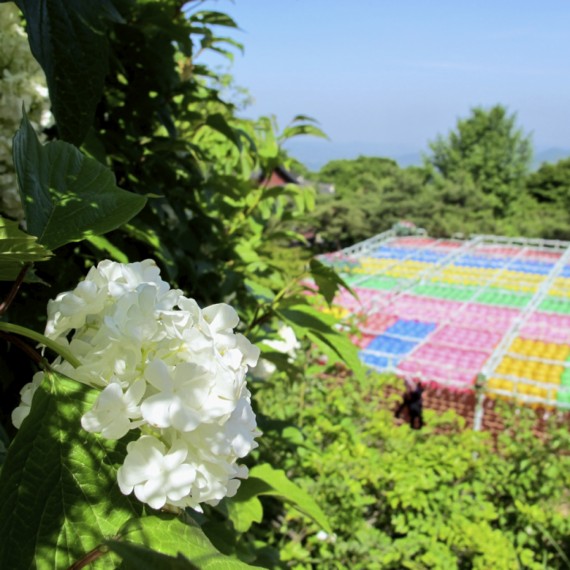
At Seokgulam Grotto.
The lanterns in the background are a part of Seokgulam Grotto, which is a cave temple that houses a Buddhist shrine. The reason it was built – a young boy’s newfound karma. The story goes: A young boy and his mother worked for a wealthy family, however, they lived in utter poverty. One day, a Buddhist monk visited the estate and the wealthy family gave the monk some donations. After that, the boy assumed the family was so well off because they were charitable towards the Buddhist monk. The next time the boy saw the Buddhist monk, the boy and his mother gave him what little rice they had. A few days later the boy passed away.
However, before the boy passed away, he foretold to his mother that he would be reincarnated in another body. His name would be Kim DaeSeong. Nine months later, the mother gave birth to a baby boy. The baby boy held his fist closed for a whole week, but when he opened up his fist “Kim DaeSeong” was encrypted in Chinese onto his palm – he was her son reincarnated. Eventually, Kim DaeSeong grew up and became a minister. In order to thank the monk for his life, he built the Buddhist temple.
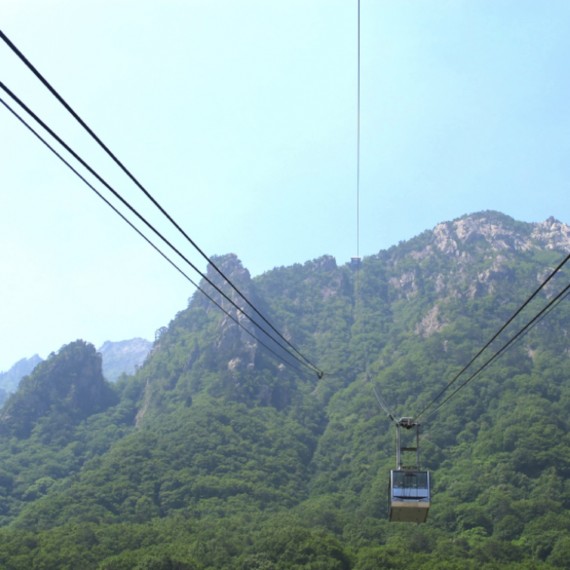
On the cable car, heading to Daechongbong.
The Seoraksan National Park was a testament to Korea’s geographic beauty. South Korea isn’t just urban, but the country also has amazing mountains covered with lush forests. We took a cable car up near the peak of Daechongbong, and we climbed the rest of the way towards the very top.
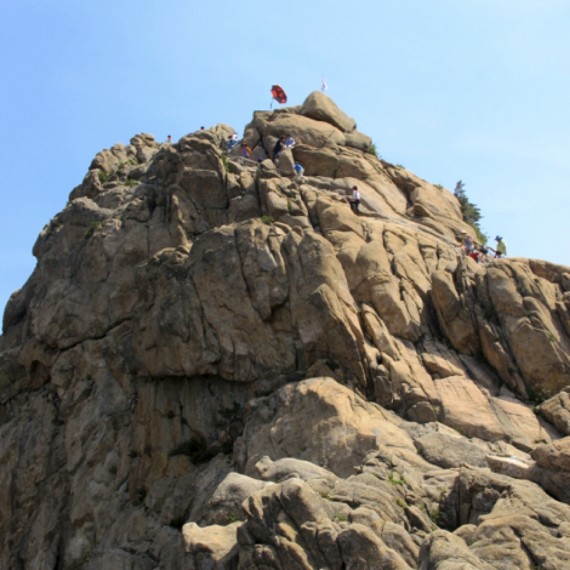
At the peak of Daechongbong.







